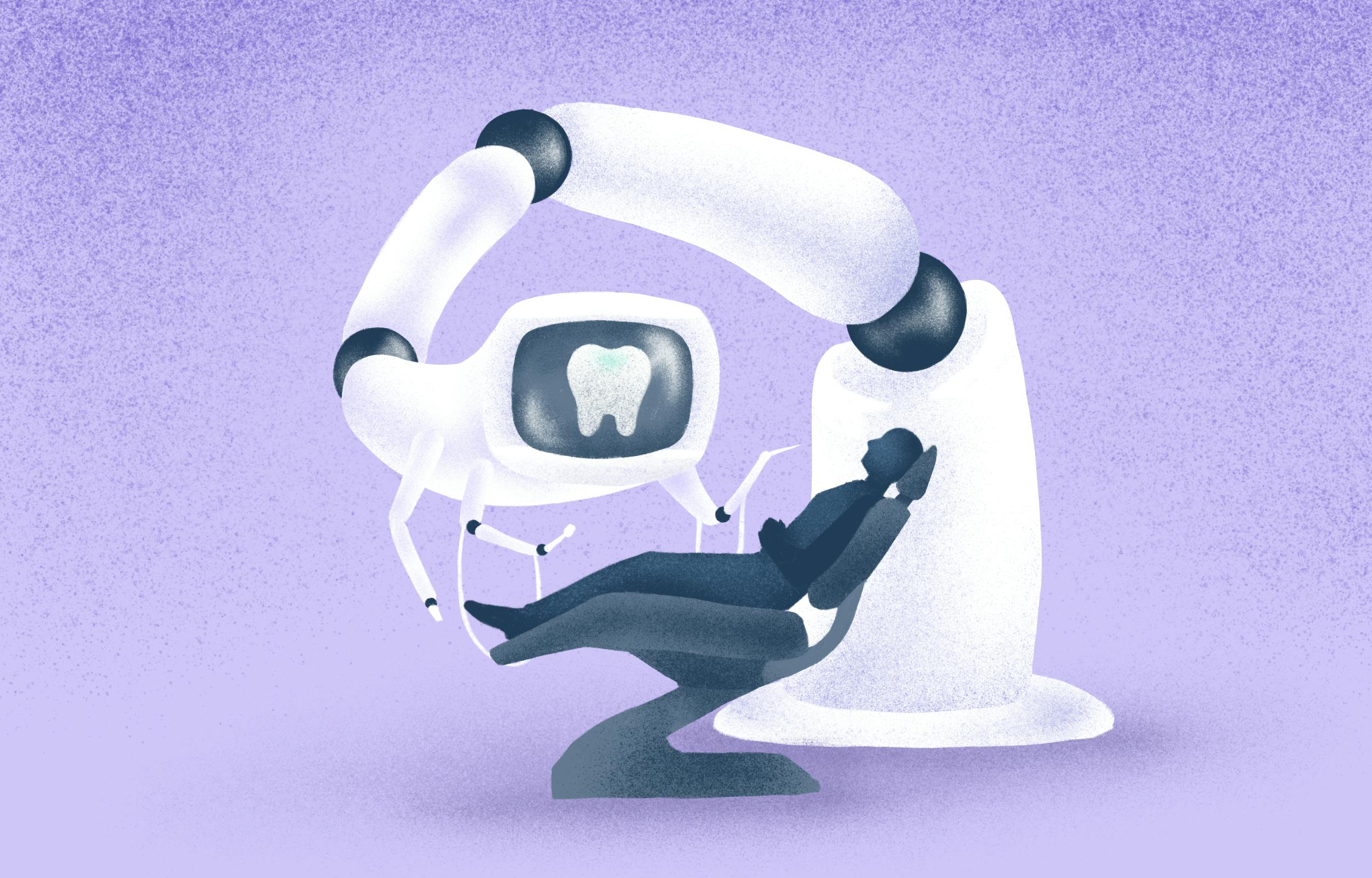The robot dentist will see you now
Recently, a medtech robotics startup got a lot of buzz when it emerged from stealth, partially because one of its backers turned out to be none other than Meta CEO Mark Zuckerberg’s father.
That company is Perceptive, which has developed technology to automate dentistry—from imaging to procedure.
Today, we’re excited about Perceptive not just because of its flashy launch, but because the technology promises to prioritize patient experience and comfort in a way we don’t often see with robotics.

How Perceptive’s tech works: The startup’s innovation is two-fold. We have the procedural robot and an imaging system based on optical coherence tomography (OCT).
- Before you let the robot drill in your mouth, you have a first imaging visit. The handheld OCT imager generates a 3D scan of the inside of your teeth. This imaging is more precise than the current gold standard 2D or 3D X-rays most dental offices use. It works a bit like an ultrasound, with reflected light instead of sound waves.
- Next, with the problem areas identified by the OCT imaging, the robot plans a drilling path and the OCT measurements are used to design the crown, which can be prepared well in advance of your arrival for the procedure.
Patient experience matters: When we talk about procedure robots (like famous surgical robot Da Vinci), we usually focus on how well they work, how they cut down on human error, and how efficient they are. What we don’t focus on is the patient experience. That’s not the case with the Perceptive robot.
When first hearing about a robotic dental procedure, we wondered: Without a human dentist chatting as they work in your mouth, wouldn’t more patients experience anxiety around the procedure? Here’s how Perceptive’s addressing those concerns:
- Efficiency: The robot takes replacing a dental crown, which would normally take several hours and multiple visits, and cuts it down to a 15-minute, single-visit procedure. Patients spend less time stressed out and in pain during and between procedure steps.
- Safety and comfort: The robot’s mechanical design includes a bite block, which is a part of the device you bite down on during the procedure, turning your head into the robot’s base. With this design, the robot can instantly account for any motion, allowing you to relax and even move your head a bit during the procedure, safe from the drill. For a human dentist, accounting for slight movements is more of an art than a science.
- Trust: Investor (and dentist) Ed Zuckerberg has pointed out that patients seeing their dentist using cutting-edge technology in their practice to increase their comfort and safety are likely to further trust their dentist as a result, further increasing their comfort.
Plus, other benefits of Perceptive’s tech include longer-lasting dental crowns due to the increased procedural accuracy as well as better patient triaging and productivity. After all, if a procedure that takes up so many visits and hours can be cut down to 15 minutes, a dental office is likely to cut down their appointment wait times.
Next steps for robotic dentistry: Well, the robot dentist won’t quite see you now. While we’re excited about how this patient-prioritizing tech has gotten with a prototype, Perceptive still has to put its tech through an FDA clinical trial. If all goes well, the public can expect to see the robot showing up in dental offices perhaps in a few years. Until then, back to the human dentist’s chair.